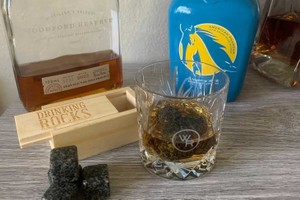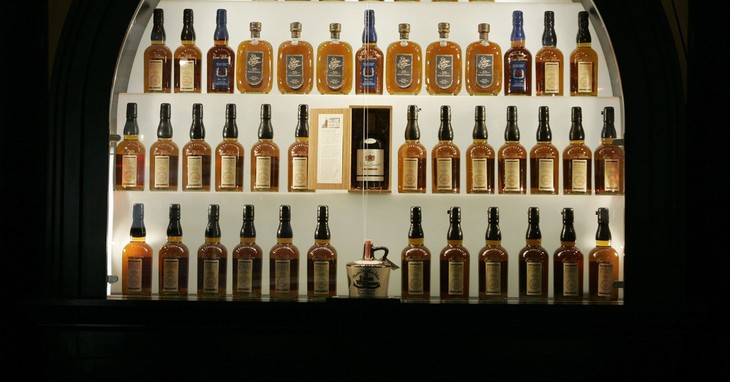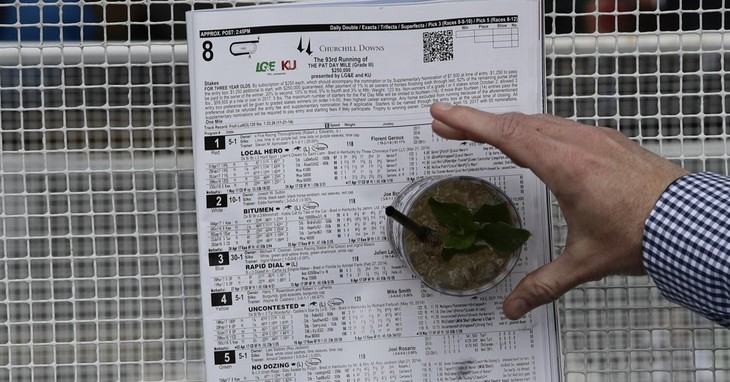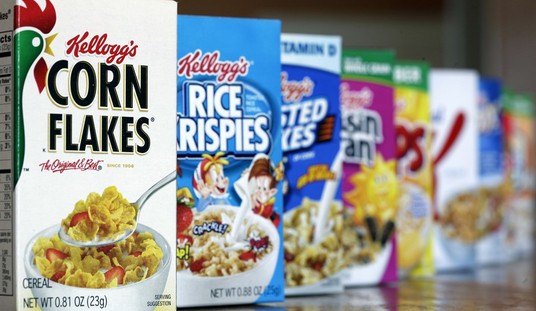Welcome to one of the new cultural features here at RedState. The Tavern is open.
Tomorrow is the Run For The Roses which, coming off of a scrambled racing season due to the pandemic, is making its traditional return to the first Saturday in May. Running for nearly 150 years, this is America’s preeminent horse race, and it is a pure Kentucky enterprise. Started by the grandson of William Clark, of Lewis and Clark fame, the British horse- racing tradition was brought to Kentucky in 1875. Its affiliation with bourbon is a constant.
The famed racecourse Churchill Downs operates on the Southside of Louisville, bourbon’s rooted home. It is estimated that somewhere close to one-third of all bourbon created is from this city, with new, larger distilling facilities cropping up on the regular. It then makes not just sense, but the perfect marriage, that America’s biggest horse race is joined by the lone, purely American spirit.
While other spirits have been around for centuries prior, bourbon became a U.S. product. Colonists arrived here with notable other potables. Scotch and whiskey were European derivatives already, as was the beer they brought over with them. Rum had grown into a commodity earlier and the Caribbean became a source of the needed sugarcane for its production. (Oddly, for a time Connecticut, of all places, was considered the Rum center, drawing the raw product from the islands.) But soon, the native elixir would emerge.

While liquor was plentiful in the early years, it was still a local product created by individuals and frequently used as a payment method. Farmers were in the practice of using any surplus grains in their stills, and soon enough, westward expansion into the area now seen as Kentucky led to the regional crop of corn as a source for their mash bills. The state has a significant limestone deposit that leads to a high-quality water supply. As river trade routes led to New Orleans, this new product became notable, and soon, the popularity of bourbon became installed.
Today, bourbon has been experiencing an explosion in popularity. New labels are showing up on a regular basis, as it is being produced in more states. This is permissible, as long as their bottle adheres to the governmental standard set for proper labeling, beginning with it being a purely American product. It must be made from a minimum of 51% corn bill, distilled at no higher than 160 proof, aged at no more than 125 proof, and bottled at a minimum of 80 proof. The barrels for aging must be new and flame-charred.
The explosive popularity of the product of this generation has led to becoming something of a challenge to distillers. The better standard of bourbon is ”straight,” which has a minimum of 2 years aging, with the preferred age being at least 4 years for the better quality labels. This means measuring market preferences that far ahead of time can be a crapshoot. As an example, for a time Buffalo Trace announced a shortage, as it was unable to keep pace with its swelling demand during a time it was expanding operations.

Sipping Corn
When it comes to drinking this elixir of The States, there are standards offered and arguments made, but this column eschews the condescension. As with most things of the vice persuasion, your preference is the preferred method. All that will take place here are recommendations; you are the ultimate arbiter.
So, what constitutes good-to-better bourbon? Your taste, ultimately. This is where the joyous practice of sampling comes into play. One thing to bear in mind — a rise in price does not always mean a commensurate rise in quality. The reason for this is that even though, in Kentucky, the local government is politically deeply vested in the bourbon trade, it is also invested in it. The aging of bourbon is regarded as a component in rising quality, but it is also costly because a distiller pays a tax on every barrel in its warehouses each year, and then they pay the federal government upon the bottling on a per-gallon basis. Add to this the fact that they lose a share of product over time to absorption and evaporation — the “angel’s cut” — and you then get the elevated costs which are passed on the consumer.
The main recommendation given here will be to be sure to diversify. Determine which brands and labels you prefer for a variety of uses. At any time, I possess over one dozen different bottles, those divided up for one of 3 uses: sipping, drinking, or mixing. The sippers are high-grade, high-potency bourbons. These you sit back and enjoy, possibly with a cigar, but you are able to focus on the flavors and quality. My drinking choices are the mid-range picks, those I enjoy but when I am otherwise occupied, such as with company or while working/podcasting/etc. The mixers are the lower level labels for multiple ingredient cocktails; good tasting, but you won’t be dropping in 100 proof single-barrel to mix with soda and other mixers.
As for how to drink these, it too is a matter of preference. Many are militant, saying you should only drink quality bourbon neat. But I have heard from master distillers who prefer ice with their product, while others split the difference, opting for whiskey stones — these are kept in the freezer and added to a glass, chilling the product but not diluting it. I prefer ice, as it delivers my choice in temperature, and frequently the flavors of the bourbon evolve as it mixes in, deepening the enjoyment.

One recommendation, regardless of your choice; before drinking, bring the product just to your lips, initially. Let the astringency of the alcohol hit your mouth and tongue and alter your palate first. Then, after about half a minute, your taste will be on full alert and the layered flavors will become more pronounced.
So, you now have your primer for a full day of Bluegrass horse-racing. As the main race has a post time of 7pm ET, there is a full day of undercard races of various disciplines and distances, beginning around noon on on NBC Sports Net, and then NBC. So, here is where you can stock up for a full day of bourbon enjoyment. The first is the most obvious — mint juleps.
This is the centuries-old Kentucky standard, and while there is a traditional method, you may not have all the tools at your disposal, but fret not. Here first is the old-time method.
Start with a metal shaker cup, add about 6-8 mint leaves, lightly crushed, add a teaspoon of simple syrup. Take crushed ice and fill the cup with a small dome, then drizzle 3-4 ounces of high-grade bourbon. Work in a straw, and add a stalk of mint. Now — since most are not in possession of tin cups — here is your home method. Making a batch of simple syrup ahead of time is the easiest.

Mint Julep
4oz. Bourbon
Fresh mint stalks
simple syrup
Crushed ice
Break off a handful of mint leaves, crushing them in your fist, and dropped into a shaker. (this will be enough to release the oils, but grinding them too much can release more chlorophyll and give a grassy flavor.) Add half the bourbon and half the simple syrup, add ice, top with remaining bourbon and syrup. Shake well, pour into a rocks glass. Garnish with more mint.
Then, for some variations with the liquor of choice
THE BOURBON LIFT
This is frothy and disappears rather quickly
(in a shaker with ice)
- 1.5oz Bourbon
- 1oz Heavy Cream
- 1/2 oz coffee liquor
- 1/2oz Almond Orgeat (if unavailable, Amaretto an acceptable replacement)
Shake well for 15 seconds, pour into Collins glass, just short of the rim. Fill with club soda (Slowly pour club soda from a few inches. This will “lift” a foamy head)
JOCKEY CLUB
If you have old school drinkers, go with this thoroughbred-acceptable Manhattan variant
(in a shaker with ice)
- 2oz Bourbon
- 1/2oz Sweet Vermouth
- Splash Maraschino Liquor
(shake well, strain over maraschino cherry in a chilled martini glass)
Now you and any guests will be well served for the race. The post-time favorite horse is Essential Quality, at 2-1. I was initially looking at Known Agenda, who won the Florida Derby, but then he drew the dreaded #1 post position. Hot Rod Charlie has had a strong season, but I am keeping an eye on Highly Motivated at 10-1. Of course, there are some themed choices to watch. Bourbonic has had a decent Spring, but the outside post means he goes off at 30-1, while Midnight Bourbon is better positioned directly in the centerline gate, with 20-1 odds.
So, go enjoy a few American traditions tomorrow!
And for more potable information and cultural discussions come sit in with us on The Cocktail Lounge podcast














Join the conversation as a VIP Member